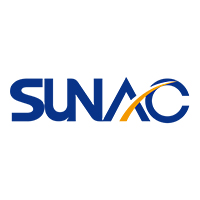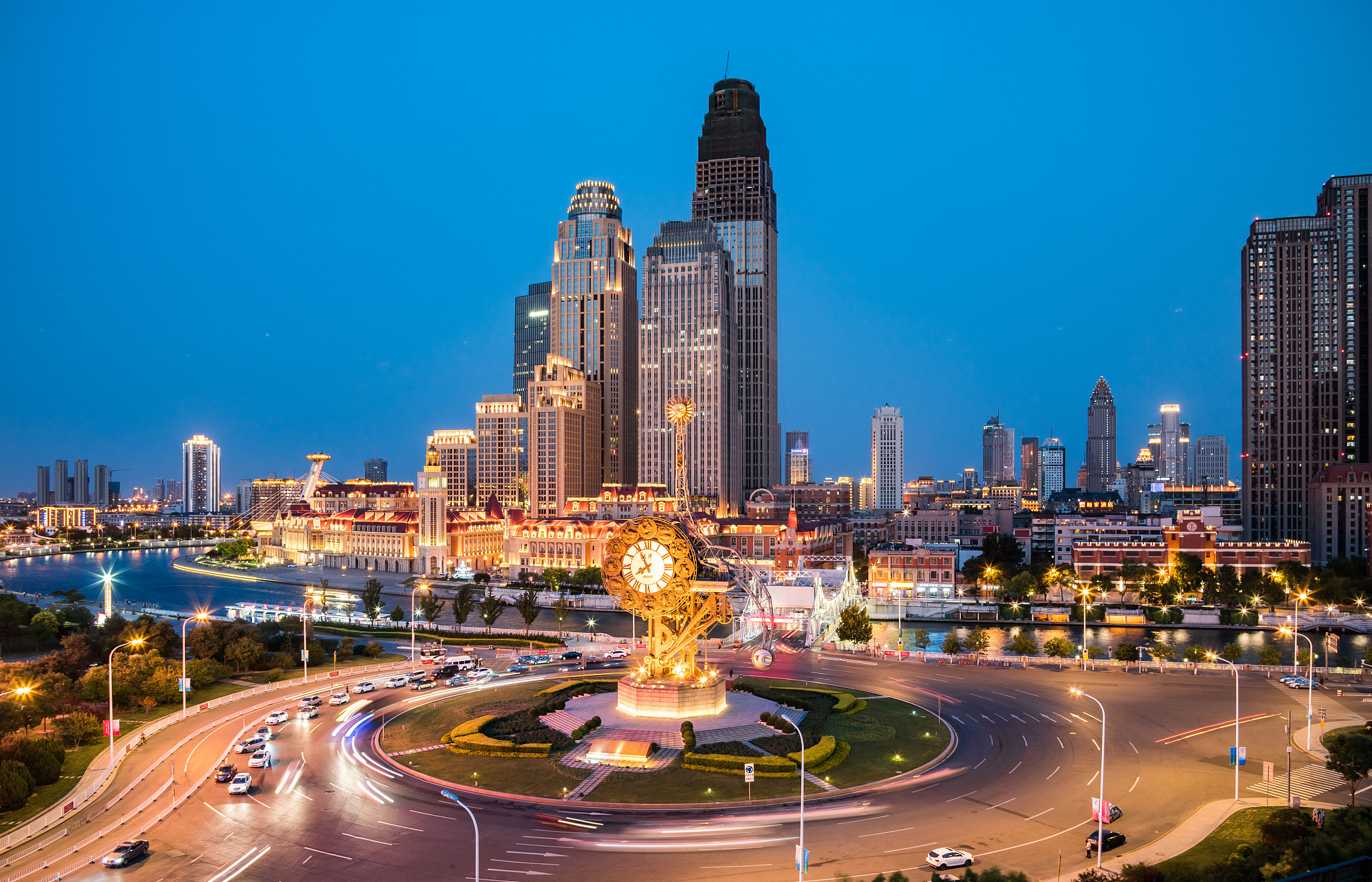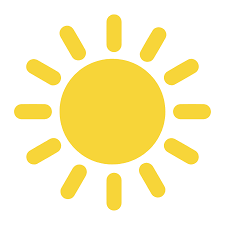
漢德百科全書 | 汉德百科全书
 Tianjin Shi-TJ
Tianjin Shi-TJ

 Exhibition
Exhibition
 Tianjin Shi-TJ
Tianjin Shi-TJ

 Vacation and Travel
Vacation and Travel
 World Economic Forum,WEF
World Economic Forum,WEF
 The summer Davos Forum 2010
The summer Davos Forum 2010
 World Economic Forum,WEF
World Economic Forum,WEF
 The summer Davos Forum 2012
The summer Davos Forum 2012
 World Economic Forum,WEF
World Economic Forum,WEF
 The summer Davos Forum 2014
The summer Davos Forum 2014
 World Economic Forum,WEF
World Economic Forum,WEF
 The summer Davos Forum 2016
The summer Davos Forum 2016

 Beijing Shi-BJ
Beijing Shi-BJ
 Chinesische Mauer
Chinesische Mauer
 Gansu Sheng-GS
Gansu Sheng-GS
 Hebei Sheng-HE
Hebei Sheng-HE
 Liaoning Sheng-LN
Liaoning Sheng-LN
 Ningxia Huizu Zizhiqu-NX
Ningxia Huizu Zizhiqu-NX
 Qinghai Sheng-QH
Qinghai Sheng-QH
 Shaanxi Sheng-SN
Shaanxi Sheng-SN
 Shanxi Sheng-SX
Shanxi Sheng-SX
 Tianjin Shi-TJ
Tianjin Shi-TJ

Die Große Mauer der Ming-Dynastie (chinesisch: 明長城; pinyin: Ming changcheng), die von der Ming-Dynastie (1368-1644) erbaut wurde, ist heute der sichtbarste Teil der Chinesischen Mauer. Eine umfassende archäologische Untersuchung, bei der modernste Technologien zum Einsatz kamen, ergab, dass die Ming-Mauer eine Länge von 8 850 km vom Jiayu-Pass im Westen bis zum Meer am Shanhai-Pass hat und dann in einer Schleife in der Mandschurei an der Großen Mauer von Hushan endet. Diese besteht aus 6.259 km (3.889 Meilen) Abschnitten der eigentlichen Mauer, 359 km (223 Meilen) Gräben und 2.232 km (1.387 Meilen) natürlichen Verteidigungsbarrieren wie Hügeln und Flüssen.[1]
Während die Ming-Mauern in der heutigen Zeit im Allgemeinen als "Große Mauer" (changcheng) bezeichnet werden, wurden sie in der Ming-Zeit von den Chinesen als "Grenzbarrieren" (邊牆; bianqiang) bezeichnet, da der Begriff changcheng Bilder der Tyrannei von Qin Shi Huang (260-210 v. Chr.) hervorrufen sollte und mit der Großen Mauer von Qin in Verbindung gebracht wurde.
明长城(中文名:明长城,拼音:Ming changcheng)由明朝(1368-1644 年)修建,是今天中国长城最明显的部分。利用先进技术进行的全面考古调查得出结论,明长城西起嘉峪关,东至山海关的海边,全长 8850 公里(5500 英里),然后绕行到满洲里的虎山长城。它由 6,259 公里(3,889 英里)的实墙、359 公里(223 英里)的壕沟和 2,232 公里(1,387 英里)的天然防御屏障(如山丘和河流)组成。
虽然明代城墙在现代一般被称为 "长城"(changcheng),但在明代,它们被中国人称为 "边墙"(bianqiang),因为据说 "长城 "一词会让人联想到秦始皇(公元前 260-210 年)的暴政,并与秦长城联系在一起。
 *Double First-rate
*Double First-rate
 A-class
A-class
 *Double First-rate
*Double First-rate
 Fachlicher orientierter Aufbau
Fachlicher orientierter Aufbau

 Education and Research
Education and Research
 *Double First-rate
*Double First-rate
 Ministry of Education
Ministry of Education
 Tianjin Shi-TJ
Tianjin Shi-TJ

 Science and technology
Science and technology
 *World famous research institutions
*World famous research institutions

 *Changjiang|Yangtze River
*Changjiang|Yangtze River
 Beijing Shi-BJ
Beijing Shi-BJ
 China
China
 Erneuerbare Energie
Erneuerbare Energie
 Hydropower
Hydropower
 Hebei Sheng-HE
Hebei Sheng-HE
 Henan Sheng-HA
Henan Sheng-HA
 Jiangsu Sheng-JS
Jiangsu Sheng-JS
 Beijing-Hangzhou Grand Canal
Beijing-Hangzhou Grand Canal
 Shandong Sheng-SD
Shandong Sheng-SD
 Tianjin Shi-TJ
Tianjin Shi-TJ

Das Süd-Nord-Wassertransferprojekt (chinesisch 南水北调, Pinyin Nánshuǐ Běidiào oder 南水北调工程 Nánshuǐ Běidiào Gōngchéng; englisch South-North Water Transfer Project) ist ein Mitte der 1990er Jahre in China gestartetes Projekt, bei dem Wasser aus dem Jangtsekiang im Süden über Kanäle von einer Gesamtlänge von ca. 1200 Kilometern in die nordchinesische Ebene, insbesondere zur Versorgung Pekings, welches 3,6 Milliarden Kubikmeter Wasser pro Jahr verbraucht,[1] geführt wird. Das Wasser wird dabei über eine westliche, eine mittlere und eine östliche Route geführt. Die östliche und die mittlere Route sind bereits in Betrieb. Es ist das weltweit größte Wassertransferprojekt.
Bis 2050 soll eine Menge von jährlich 44,8 Milliarden Kubikmeter Wasser transferiert werden können, wobei 14,8 Mrd. Kubikmeter auf die östliche, 13 Mrd. Kubikmeter auf die mittlere und 17 Mrd. Kubikmeter auf die westliche Route entfallen werden.[2]
Die Projektkosten werden auf 500 Mrd. Dollar geschätzt.[3]
南水北调工程是中国一项运营中的大型水利工程,抽调中国江淮流域丰盈的水资源送到华北和西北地区,旨在改变中国南涝北旱、北方水资源严重短缺的局面[3]、促进南北方经济、社会与人口、资源、环境的协调发展[4]。该工程横穿长江、淮河、黄河、海河四大流域,是世界上最大的跨流域调水工程[5],总投资预计超过5000亿元人民币[6]。工程由东线、中线和西线三条调水线路组成,其中东线一期工程已于2013年11月15日正式通水,中线一期工程已于2014年12月12日正式通水[7]。截至2021年初,南水北调工程已累计调水超过400亿立方米[8]。







 Abe Shinzō
Abe Shinzō
 Alexis Tsipras
Alexis Tsipras
 Angela Merkel
Angela Merkel
 António Guterres
António Guterres
 Christine Lagarde
Christine Lagarde
 David Cameron
David Cameron
 Dilma Rousseff
Dilma Rousseff
 Dmitri Anatoljewitsch Medwedew
Dmitri Anatoljewitsch Medwedew
 Donald Trump
Donald Trump
 Emmanuel Macron
Emmanuel Macron

 Energy resource
Energy resource
 Felipe Calderón
Felipe Calderón
 Felipe VI.
Felipe VI.

 Financial
Financial

 Hand in Hand
Hand in Hand
 Hassan Rohani
Hassan Rohani
 Jair Bolsonaro
Jair Bolsonaro
 James Gordon Brown
James Gordon Brown
 Jean-Claude Juncker
Jean-Claude Juncker
 Jim Yong Kim
Jim Yong Kim
 Joachim Gauck
Joachim Gauck
 Joe Biden
Joe Biden
 José Luis Rodríguez Zapatero
José Luis Rodríguez Zapatero
 Juan Manuel Santos
Juan Manuel Santos
 Li Keqiang
Li Keqiang
 Liaoning Sheng-LN
Liaoning Sheng-LN
 Mario Monti
Mario Monti
 Mark Rutte
Mark Rutte
 Mauricio Macri
Mauricio Macri
 Naoto Kan
Naoto Kan
 Narendra Modi
Narendra Modi
 Nelson Mandela
Nelson Mandela

 Party and government
Party and government
 *Think Tank
*Think Tank
 Paul Kagame
Paul Kagame
 Petro Poroschenko
Petro Poroschenko
 Recep Tayyip Erdoğan
Recep Tayyip Erdoğan
 Switzerland
Switzerland
 Stephen Joseph Harper
Stephen Joseph Harper
 Tarō Asō
Tarō Asō
 Theresa May
Theresa May
 Tianjin Shi-TJ
Tianjin Shi-TJ
 Ursula von der Leyen
Ursula von der Leyen
 Wen Jiabao
Wen Jiabao

 Important International Organizations
Important International Organizations

 Economy and trade
Economy and trade
 Economic and political research
Economic and political research
 Wladimir Wladimirowitsch Putin
Wladimir Wladimirowitsch Putin
 World Economic Forum,WEF
World Economic Forum,WEF
 Klaus Schwab
Klaus Schwab
 Xi Jingping
Xi Jingping
 Yasuo Fukuda
Yasuo Fukuda

| Year | Dates | Theme |
|---|---|---|
| 1988 | The new state of the world economy | |
| 1989 | Key developments in the 90s: implications for global business | |
| 1990 | Competitive cooperation in a decade of turbulence | |
| 1991 | The new direction for global leadership | |
| 1992 | Global cooperation and megacompetition | |
| 1993 | Rallying all the forces for global recovery | |
| 1994 | Redefining the basic assumptions of the world economy | |
| 1995 | Leadership for challenges beyond growth | |
| 1996 | Sustaining globalization | |
| 1997 | Building the network society | |
| 1998 | Managing volatility and priorities for the 21st century | |
| 1999 | Responsible globality: managing the impact of globalization | |
| 2000 | New beginnings: making a difference | |
| 2001 | 25–30 January | Sustaining growth and bridging the divides: a framework for our global future |
| 2002 | 31 January – 4 February | Leadership in fragile times (held in New York instead of Davos) |
| 2003 | 21–25 January | Building trust |
| 2004 | 21–25 January | Partnering for security and prosperity |
| 2005 | 26–30 January | Taking responsibility for tough choices |
| 2006 | 25–29 January | The creative imperative[61] |
| 2007 | 24–28 January | Shaping the global agenda, the shifting power equation |
| 2008 | 23–27 January | The power of collaborative innovation |
| 2009 | 28 January – 1 February | Shaping the post-crisis world |
| 2010 | 27–30 January | Improve the state of the world: rethink, redesign, rebuild |
| 2011 | 26–30 January | Shared norms for the new reality |
| 2012 | 25–29 January | The great transformation: shaping new models |
| 2013 | 23–27 January | Resilient dynamism[62] |
| 2014 | 22–25 January | The reshaping of the world: consequences for society, politics and business |
| 2015 | 21–24 January | New global context |
| 2016 | 20–23 January | Mastering the fourth industrial revolution |
| 2017 | 17–20 January | Responsive and responsible leadership |
| 2018 | 23–26 January | Creating a shared future in a fractured world |
| 2019 | 22–25 January | Globalization 4.0: shaping a global architecture in the age of the fourth industrial revolution |
| 2020 | 20–24 January | Stakeholders for a cohesive and sustainable world[citation needed] |
| 2021 | 17–20 August | canceled as a result of COVID-19 pandemic |
| 2022 | 22–26 May | History at a Turning Point: Government Policies and Business Strategies[63] |
| 2023 | 16-20 January | Cooperation in a Fragmented World [64] |
Das Weltwirtschaftsforum (World Economic Forum, kurz WEF) ist eine in Cologny im Schweizer Kanton Genf ansässige Stiftung, die in erster Linie für das von ihr veranstaltete Jahrestreffen gleichen Namens bekannt ist, das alljährlich in Davos im Kanton Graubünden stattfindet. Hierbei kommen international führende Wirtschaftsexperten, Politiker, Intellektuelle und Journalisten zusammen, um über aktuelle globale Fragen zu diskutieren. Diese umfassen neben der Wirtschafts- auch die Gesundheits- und Umweltpolitik.
世界经济论坛(英语:World Economic Forum,简称WEF)是一个以基金会形式成立的非营利组织,成立于1971年,总部设在瑞士日内瓦州科洛尼。其以每年冬季在瑞士滑雪胜地达沃斯举办的年会(俗称达沃斯论坛,英语:Davos Forum)闻名于世,历次论坛均聚集全球工商、政治、学术、媒体等领域的领袖人物,讨论世界所面临最紧迫问题。[1]
世界経済フォーラム(せかいけいざいフォーラム、World Economic Forum)は、経済、政治、学究、その他の社会におけるリーダーたちが連携することにより、世界・地域・産業の課題を形成し、世界情勢の改善に取り組む、独立した国際機関。ジュネーヴに本部を置きスイスの非営利財団の形態を有している。1971年にスイスの経済学者クラウス・シュワブにより設立された。
スイスのダボスで開催される年次総会が特によく知られており、約2500名の選ばれた知識人やジャーナリスト、多国籍企業経営者や国際的な政治指導者などのトップリーダーが一堂に会し、健康や環境等を含めた世界が直面する重大な問題について議論する場となっている。また、同機関は、東アジアやラテンアメリカなど6-8の地域会議を開催し、中国及びアラブ首長国連邦においても別途の年次総会を開催している。さらに、会議だけではなく、同機関はさまざまな研究報告書を発表したり、メンバーたちが各業界に関連したイニシアティブに関わるなどの活動を行っている。2011年のダボスにおける年次総会は1月26日-30日に開催された。2012年総会は1月25日-29日に"The Great Transformation: Shaping New Models"というテーマで開催された。2013年総会は1月23日-27日に、創設者クラウス・シュワブによる「地球規模の協力の必要性が今ほど重要な時代はない」との声明を受け、"Resilient Dynamism"というテーマで催された。2014年年次総会は1月22-25日に"The Reshaping of the World: Consequences for Society, Politics and Business"というテーマで催された。2015年年次総会は、"The New Global Context"というテーマで催された。
The World Economic Forum (WEF) is a Swiss nonprofit foundation, based in Cologny, Geneva, Switzerland. Recognised in 2015 by the Swiss authorities as an "other international body" under Switzerland's Host State Act 2007 (HSA, SR 192.12),[1] its mission is cited as "committed to improving the state of the world by engaging business, political, academic, and other leaders of society to shape global, regional, and industry agendas".
The WEF is best known for its annual meeting at the end of January in Davos, a mountain resort in Graubünden, in the eastern Alps region of Switzerland. The meeting brings together some 2,500 top business leaders, international political leaders, economists, celebrities and journalists for up to four days to discuss the most pressing issues facing the world. Often this location alone is used to identify meetings, participation, and participants, with such phrases as "a Davos panel" and "Davos man" being used.[2]
The organization also convenes some six to eight regional meetings each year in locations across Africa, East Asia, and Latin America, and holds two further annual meetings in China, India and the United Arab Emirates. Beside meetings, the foundation produces a series of research reports and engages its members in sector-specific initiatives.[3]
Le forum économique mondial (en anglais : World Economic Forum, abrégé WEF), souvent appelé forum de Davos1,2,3, est une fondation à but non lucratif dont le siège est à Genève. Ce forum est connu pour sa réunion annuelle à Davos, en Suisse, qui réunit des dirigeants d’entreprise, des responsables politiques du monde entier ainsi que des intellectuels et des journalistes, afin de débattre les problèmes les plus urgents de la planète, y compris dans les domaines de la santé et de l’environnement. Le forum organise également la « Réunion annuelle des nouveaux champions » en Chine et plusieurs réunions régionales qui se tiennent tout au long de l’année. Il a été créé en 1971 par Klaus M. Schwab, professeur d’économie en Suisse4. Parallèlement aux réunions, le forum publie un certain nombre de rapports économiques et implique ses membres dans différentes initiatives liées à des secteurs spécifiques5.
Il Forum economico mondiale (nome originale in inglese: World Economic Forum, conosciuto anche come Forum di Davos) è una fondazione senza fini di lucro con sede a Cologny, vicino a Ginevra, in Svizzera, nata nel 1971 per iniziativa dell'economista ed accademico Klaus Schwab.[1]
La fondazione organizza ogni inverno, presso la cittadina sciistica di Davos in Svizzera, un incontro tra esponenti di primo piano della politica e dell'economia internazionale con intellettuali e giornalisti selezionati, per discutere delle questioni più urgenti che il mondo si trova ad affrontare, anche in materia di salute e di ambiente. Oltre a questo celebre incontro annuale, il Forum economico mondiale organizza ogni anno un meeting in Cina e negli Emirati Arabi Uniti e diversi incontri a livello regionale. La Fondazione produce anche una serie di rapporti di ricerca e impegna i suoi membri in specifiche iniziative settoriali.[2]
El Foro Económico Mundial (World Economic Forum, WEF), también llamado Foro de Davos, es una fundación sin fines de lucro con sede en Ginebra, que se reúne anualmente en el Monte de Davos (Suiza), y que sobre todo es conocida por su asamblea anual en Davos, Suiza. Allí se reúnen los principales líderes empresariales, los líderes políticos internacionales, así como periodistas e intelectuales selectos, a efectos de analizar los problemas más apremiantes que afronta el mundo, y entre ellos, la salud y el medio ambiente desde 1991.
El Foro también organiza la “Asamblea Anual de Nuevos Campeones” en China y una serie de asambleas regionales durante el año. En 2008, dichas asambleas regionales incluyeron reuniones en Europa y Asia Central, Asia Oriental, la Mesa Redonda de Directores Ejecutivos de Rusia, África, Oriente Medio, así como el Foro Económico Mundial en Latinoamérica.
Durante el 2008, se lanzó la “Cumbre Inaugural sobre la Agenda Global" en Dubái, con la presencia de 700 expertos mundiales de cada sector que trataron 68 cambios globales identificados por el Foro.
El Foro Económico Mundial fue fundado en 1971 por Klaus M. Schwab, profesor de economía en Suiza.1 Además de asambleas, el Foro genera una serie de informes de investigación e involucra a sus miembros en iniciativas específicas de cada sector.2
Всемирный экономический форум (ВЭФ) — швейцарская неправительственная организация, наиболее известная организацией ежегодных встреч в Давосе. На встречи приглашаются ведущие руководители бизнеса, политические лидеры, видные мыслители и журналисты. Предметом обсуждения являются наиболее острые мировые проблемы, включая здравоохранение и охрану окружающей среды.
 Architecture
Architecture
 History
History
 Geography
Geography

 Transport and traffic
Transport and traffic
 Companies
Companies
 Religion
Religion
 Review
Review